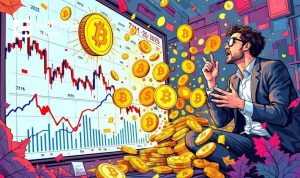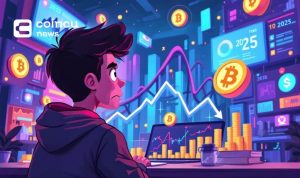All the truth behind the story of Terra’s collapse from the perspective of the project’s founder was shared by Mr. Do Kwon in the latest interview with Coinage Media.

After 3 months of silence in front of the public about Terra’s demise, CEO Do Kwon spoke out for the first time through an exclusive interview with Coinage Media.
By the evening of August 15, the entire interview was premiered. Accordingly, Do Kwon told the whole truth about his psychological development and what he faced in the face of one of the biggest crises in the history of cryptocurrencies.
Do Kwon and co-founder Daniel Shin founded Chai, a major digital payments startup in South Korea. Chai allows people to use UST to make purchases without even realizing they are buying and selling in crypto. And when Chai succeeds in Korea, Terra has an undeniable competitive advantage.
In 2019, when the market entered winter, Do Kwon had a hard time attracting investors to join the project. During this time, he bought out Shin’s ownership stake in Terra, leaving Shin free to develop his own Chai.
In June 2022, the Wall Street Journal reported that Chai had stopped using UST by the end of 2021. However, Do Kwon still advertises Chai as a strong adopter of UST, taking Chai as its base. A good example for investors to be optimistic about Terra’s future is an interview with crypto investor Anthony Pompliano. To explain this incident, Do Kwon shared that he didn’t know that Chai had stopped paying UST.
On May 7, an unplanned movement of assets between trading pools initiated the slide of the fourth largest cryptocurrency. It caused an imbalance on the Luna side of the Curve pool. This anomaly might have been corrected because it is not unusual.
However, things went from bad to worse in this case, resulting in one of the most infamous network collapses in crypto history. Do Kwon acknowledged in an interview that he believes there was a mole within this team and that the critical blow to the network came from an insider.

Some unnamed traders liquidated $200 million of UST within 13 minutes of the liquidity imbalance. The trend continued until the next morning, leaving the trading pool with a lingering imbalance and the UST value fluctuating between $1 and 99 cents. The UST had lost its peg to the dollar by a small margin.
“The sentiment on Twitter started to get worse… And then there started to be more people that were trading against the Curve pools,” Kwon recalls his morning after the big trade that exposed the liquidity crunch at the Terra Luna ecosystem.
Kwon felt unable to stop the attack because his leadership team was going to Singapore for a quarterly meeting at Terraform’s headquarters. Kwon acknowledged that the date of the financial transfer, as well as the unavailability of crucial Terra executives owing to a scheduled official engagement, was inside information.
“The only people that knew that were TFL employees…. So if you’re asking me whether there was a mole at Terraform Labs, that’s probably ‘yes,’ he said.
Other challenges fundamental to the Terra Luna network are addressed in the interview. For example, UST-algorithmic Luna’s pegging, in contrast to stablecoins backed by hard cash, and why people will hold their dollars in UST if there is nothing else to it were the questions that drove the network to bet big on the unviable Anchor Savings Protocol, which promised 20% annual returns.

It propelled Terra to the league’s top, but offering 20% returns when banks offered only 1% – 2% was unsustainable. There was only one way for the network to avoid bankruptcy: a steady flow of revenue into Anchor through increased adoption.
“When the anonymous traders struck on May 7, Anchor’s runway was down to only 45 days before it would need another cash injection. And because this was all playing out on a transparent blockchain, anyone could see the end of the road looming on the horizon.”
DISCLAIMER: The Information on this website is provided as general market commentary and does not constitute investment advice. We encourage you to do your own research before investing.
Join CoinCu Telegram to keep track of news: https://t.me/coincunews
Follow CoinCu Youtube Channel | Follow CoinCu Facebook page
Harold
CoinCu News






















